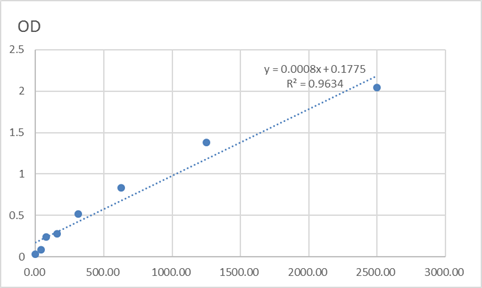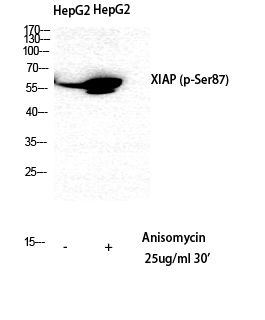Total XIAP Cell-Based Colorimetric ELISA Kit
- Catalog No.:KA4326C
- Applications:ELISA
- Reactivity:Human;Mouse;Rat
- Gene Name:
- XIAP
- Human Gene Id:
- 331
- Human Swiss Prot No:
- P98170
- Mouse Swiss Prot No:
- Q60989
- Rat Swiss Prot No:
- Q9R0I6
- Storage Stability:
- 2-8°C/6 months
- Other Name:
- E3 ubiquitin-protein ligase XIAP (EC 6.3.2.-) (Baculoviral IAP repeat-containing protein 4) (IAP-like protein) (ILP) (hILP) (Inhibitor of apoptosis protein 3) (IAP-3) (hIAP-3) (hIAP3) (X-linked inhibitor of apoptosis protein) (X-linked IAP)
- Detection Method:
- Colorimetric
- Background:
- disease:Defects in XIAP are the cause of lymphoproliferative syndrome X-linked type 2 (XLP2) [MIM:300635]. XLP is a rare immunodeficiency characterized by extreme susceptibility to infection with Epstein-Barr virus (EBV). Symptoms include severe or fatal mononucleosis, acquired hypogammaglobulinemia, pancytopenia and malignant lymphoma.,domain:The first BIR domain is involved in interaction with MAP3K7IP1 and is important for dimerization. The second BIR domain is sufficient to inhibit caspase-3 and caspase-7, while the third BIR is involved in caspase-9 inhibition. The interactions with SMAC and PRSS25 are mediated by the second and third BIR domains.,function:Apoptotic suppressor. Has E3 ubiquitin-protein ligase activity. Mediates the proteasomal degradation of target proteins, such as caspase-3, SMAC or AIFM1. Inhibitor of caspase-3, -7 and -9. Mediates activation of MAP3K7/TAK1, leading to the activation of NF-kappa-B.,online information:XIAP mutation db,PTM:Phosphorylation by PKB/AKT protects XIAP against ubiquitination and protects the protein against proteasomal degradation.,PTM:Ubiquitinated and degraded by the proteasome in apoptotic cells.,similarity:Belongs to the IAP family.,similarity:Contains 1 RING-type zinc finger.,similarity:Contains 3 BIR repeats.,subunit:Monomer, and homodimer. Interacts with SMAC and with PRSS25; these interactions inhibit apoptotic suppressor activity. Interacts with MAP3K7IP1 and AIFM1. Interaction with SMAC hinders binding of MAP3K7IP1 and AIFM1. Interacts with TCF25.,tissue specificity:Ubiquitous, except peripheral blood leukocytes.,
- Function:
- proteolysis, apoptosis, anti-apoptosis, response to DNA damage stimulus, cell death, macromolecule catabolic process, regulation of cell death, programmed cell death, death, modification-dependent protein catabolic process,protein catabolic process, cellular response to stress, regulation of apoptosis, negative regulation of apoptosis,regulation of programmed cell death, negative regulation of programmed cell death, modification-dependent macromolecule catabolic process, cellular protein catabolic process, cellular macromolecule catabolic process,proteolysis involved in cellular protein catabolic process, negative regulation of cell death,
- Subcellular Location:
- Cytoplasm. Nucleus. TLE3 promotes its nuclear localization.
- Expression:
- Expressed in colonic crypts (at protein level) (PubMed:30389919). Ubiquitous, except peripheral blood leukocytes (PubMed:8654366).
- June 19-2018
- WESTERN IMMUNOBLOTTING PROTOCOL
- June 19-2018
- IMMUNOHISTOCHEMISTRY-PARAFFIN PROTOCOL
- June 19-2018
- IMMUNOFLUORESCENCE PROTOCOL
- September 08-2020
- FLOW-CYTOMEYRT-PROTOCOL
- May 20-2022
- Cell-Based ELISA│解您多样本WB检测之困扰
- July 13-2018
- CELL-BASED-ELISA-PROTOCOL-FOR-ACETYL-PROTEIN
- July 13-2018
- CELL-BASED-ELISA-PROTOCOL-FOR-PHOSPHO-PROTEIN
- July 13-2018
- Antibody-FAQs



